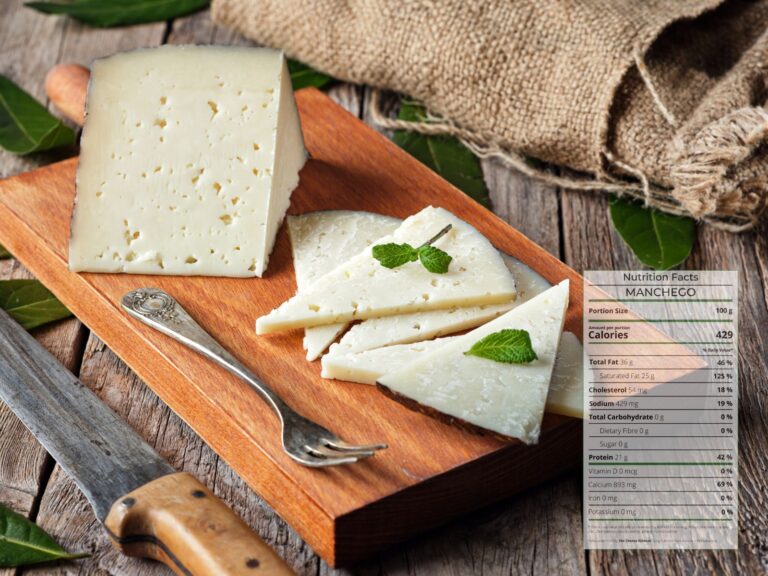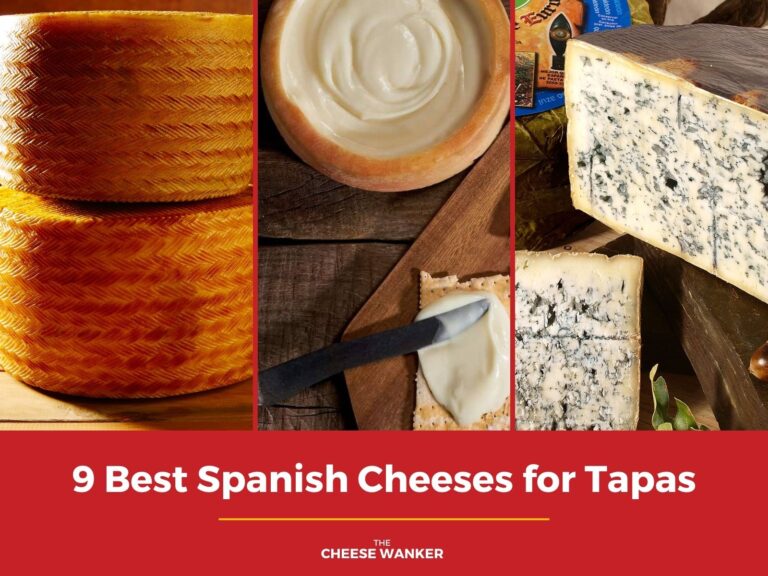Manchego cheese is a beloved Spanish cheese known for its unique flavour and texture. In this article, we will delve into the history and production of Manchego cheese and explore the different types and ages of Manchego.
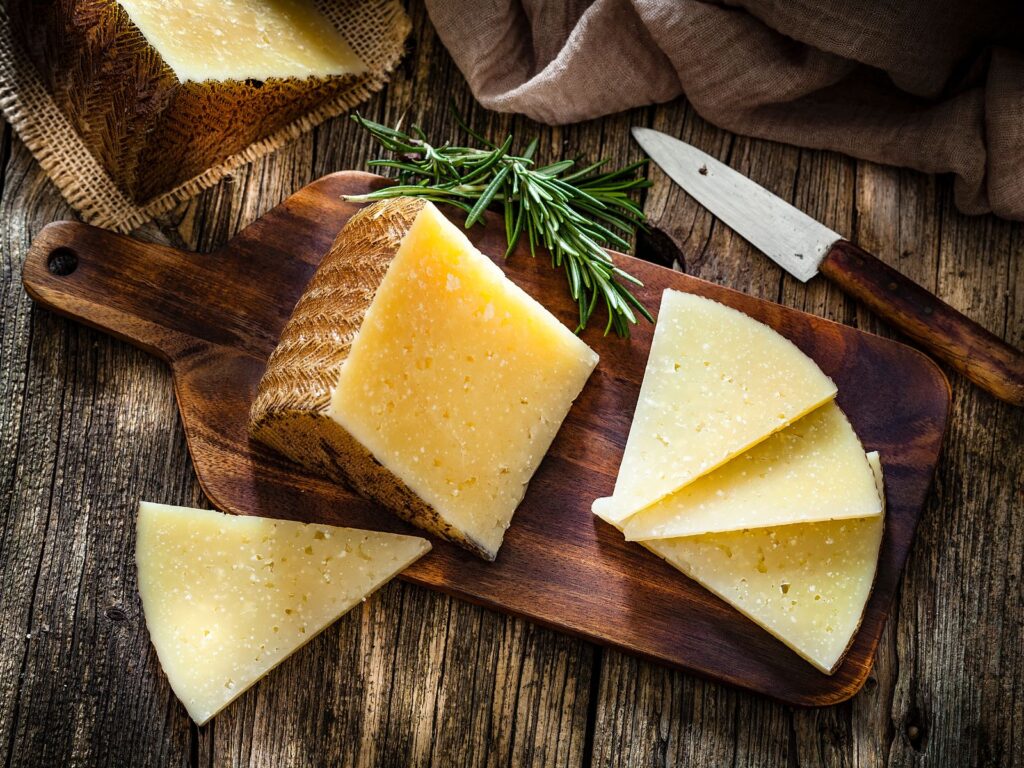
SEE ALSO: The essential Spanish cheeses you need for your next tapas night →
What is Manchego?
Manchego is a cheese made from the milk of Manchega sheep, which are native to the La Mancha region of Spain. It is a semi-hard cheese with a creamy, slightly salty taste and a crumbly texture. The cheese is typically aged for a few months, but can also be aged for up to two years for a stronger flavour.
Where does Manchego come from?
Manchego cheese is named after the La Mancha region of Spain, where it has been produced for centuries. The region is known for its arid climate and grasslands, which are ideal for raising sheep. The cheese is still produced in this region today, and is considered a traditional Spanish cheese.
It is produced by a number of different cheese makers, both large and small, who follow the traditional recipe and use the raw milk of Manchega sheep. Some of the most well-known producers include Hacienda Zorita, Dehesa de los Llanos and Don Cayo. These companies are known for their high-quality cheeses, which are often aged for different lengths of time to create different flavours and textures.
Manchego cheese is also made by smaller, artisanal producers who may use more traditional methods and produce cheese in smaller batches. Regardless of the producer, this cheese from La Mancha is a beloved symbol of Spanish culture and cuisine, and is enjoyed by cheese lovers around the world.
Manchega sheep: the milk behind the cheese
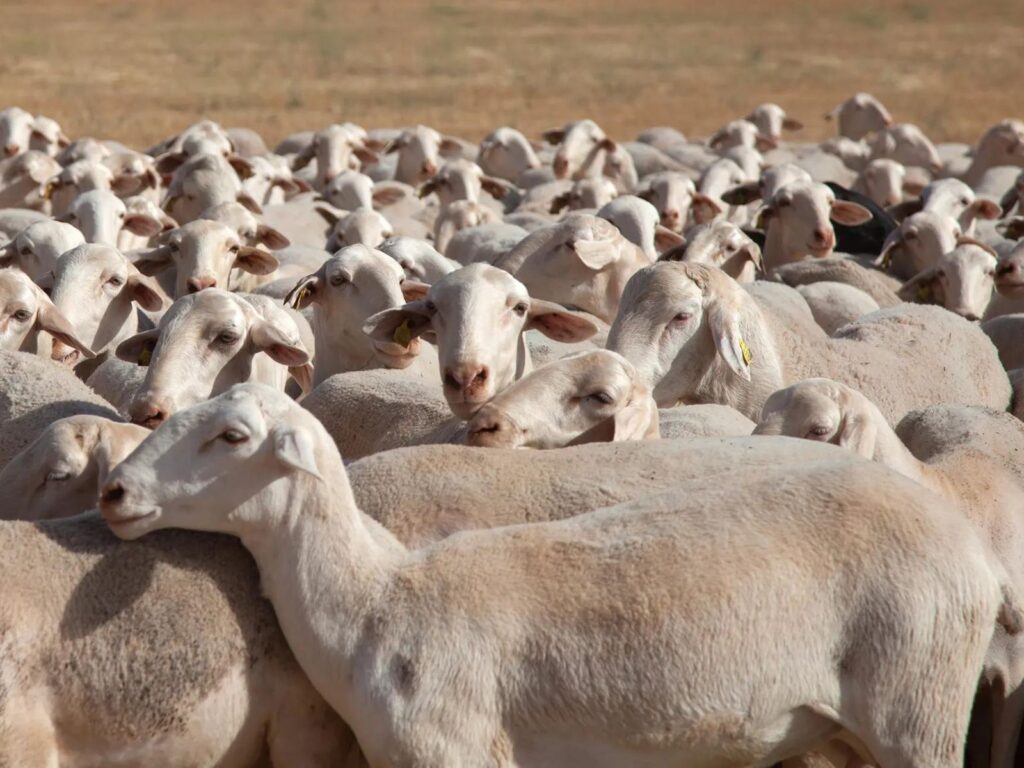
The Manchega sheep is a breed of sheep that is native to the La Mancha region of Spain. This breed is known for its hardiness and adaptability to the arid climate and dry grasslands of the region. Manchega sheep produce milk that is used to make the famous Manchego cheese, which has become a traditional and important product of the region.
These sheep are medium-sized, with white or cream-coloured wool and distinctive curved horns. Having said that, most farmed breeds of Manchega are polled through selective breeding to be hornless. Without a doubt, they are an important part of the history and culture of La Mancha and remain an integral part of the production of Manchego cheese to this day.
How Manchego is made
Here is an overview of the process of making Manchego cheese.
- Milk collection: Manchego cheese is made from raw sheep’s milk, which is collected from local farms in La Mancha.
- Curdling: The cheesemaker gently warms up the fresh milk and adds rennet, which causes the milk to curdle and form solid curds.
- Cutting and draining: Next, they cut the resulting curds into small pieces and drain the curd to remove the whey (liquid).
- Moulding: Once the whey has drained, the maker presses the curds into special moulds to form the shape of the cheese. We’ll tell you more about those unique moulds a little bit later.
- Salting: The cheese is then salted and left to rest for a few days to develop its characteristic flavour.
- Ageing: An affineur will typically age Manchego wheels for several months, during which time they develop a hard, crumbly texture and a nutty flavour. During those months, they regularly brush and turn each wheel of cheese. Of course, the length of ageing can vary depending on the desired flavour and texture of the cheese.
Throughout the process of making Manchego cheese, the cheese is carefully monitored to ensure that it meets the high standards of quality and flavour that are associated with this traditional Spanish cheese.
How does Manchego develop its herringbone rind?
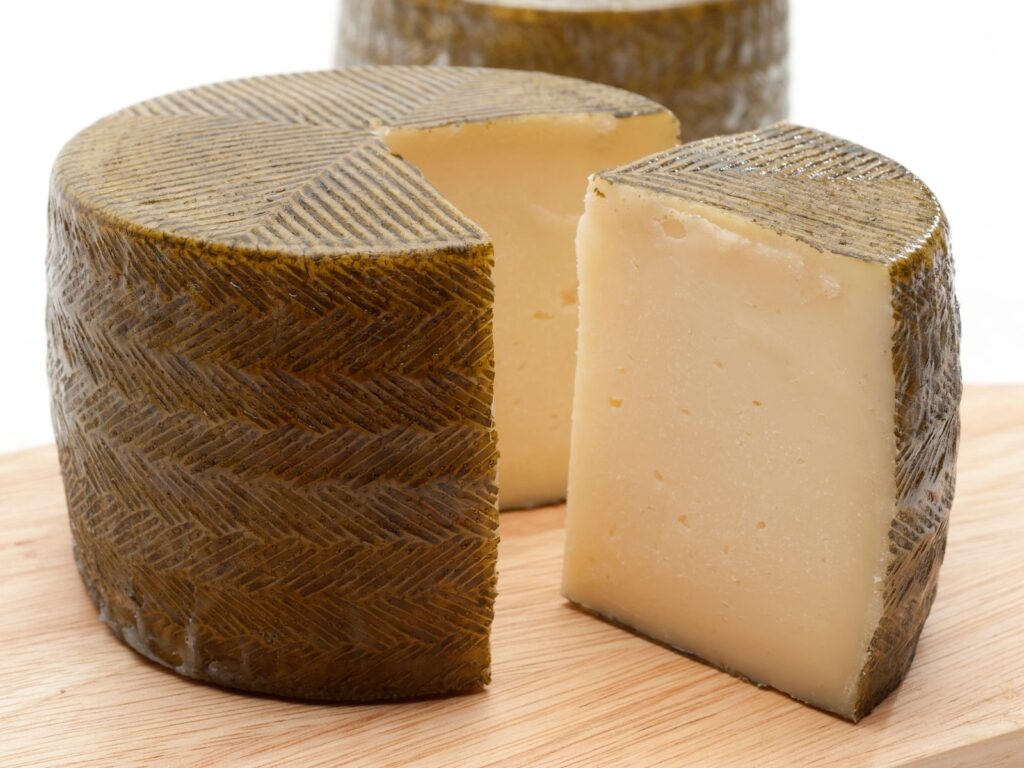
Undoubtedly, one of the most iconic characteristics of this legendary Spanish cheese is its unique herringbone rind. The herringbone texture on the rind of Manchego cheese is a result of the traditional woven esparto grass mould used in its production. The mould is wrapped tightly around the cheese during the curdling process, which gives the cheese its characteristic pattern.
The esparto grass mould serves a few purposes, such as protecting the cheese from damage during the pressing process and helping to shape the cheese into its characteristic wheel shape. Furthermore, the mould also adds a distinctive flavour to the cheese and helps to regulate the moisture level as the cheese ages.
This technique has been used for centuries in the production of Manchego cheese and is one of the many factors that contribute to its unique and beloved flavour and appearance. However, some of the more commercial producers of this cheese use plastic moulds with the texture embossed on the inside.
What are the different ages of Manchego?
Manchego cheese can be aged for different periods of time, resulting in varying textures, flavours, and intensities. The three main age categories of Manchego are:
Fresco
This is the youngest and mildest form of Manchego cheese, aged for only a few weeks. Hence, it has a creamy and slightly tangy flavour with a soft, moist texture. Fresco is best consumed soon after it is made and is a popular ingredient in salads, sandwiches, and other dishes where its mild flavour can complement other ingredients.
Semi-Curado & Curado
These semi-aged versions of Manchego age for 3-4 months (Semi-Curado) and 4-6 months (Curado) respectively. As you would expect, they have a firmer texture and a nutty, sweet flavour with a hint of saltiness. At this age, Manchego is often served on cheese boards or as a topping on toast or crackers.
Viejo
This is the most aged and intense form of Manchego cheese, aged for more than a year. It has a crumbly texture and a complex flavour that is nutty and slightly salty. Manchego Viejo is often enjoyed on its own, paired with a glass of red wine or a slice of quince paste, or used as a seasoning in dishes to add depth and complexity of flavour.
Manchego Artesano vs Commercial Manchego
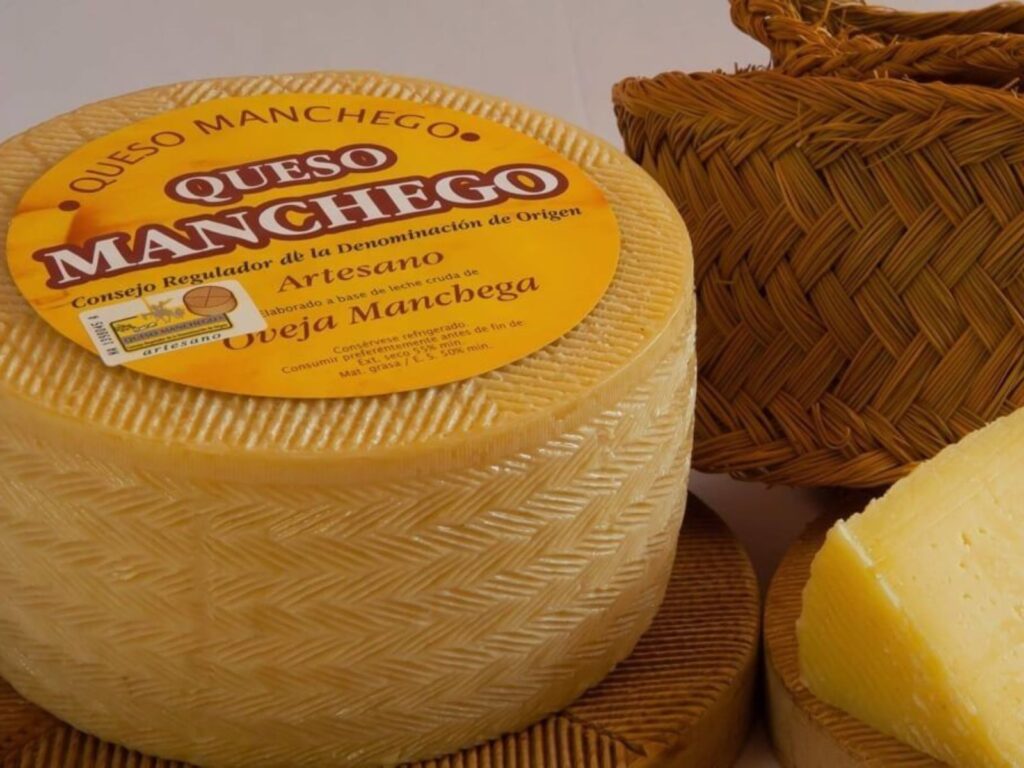
As well as different ages, Manchego can be classified based on the type of producer. Indeed, you will find broadly two types of Manchego within Spain and around the world: Artesano and Commercial. Here are some of the differences between the two:
- Production: Commercial Manchego is mass-produced in industrial facilities, while Manchego Artesano is made using traditional methods by small-scale producers.
- Milk: Commercial Manchego is made from pasteurised sheep’s milk, while Manchego Artesano is made from raw sheep’s milk.
- Ageing: Commercial Manchego is typically aged for a shorter period of time, around 60 days, while Manchego Artesano is aged for longer periods of time, up to 12 months or more.
- Flavour: Manchego Artesano is generally considered to have a richer and more complex flavour than commercial Manchego, due to the use of raw milk and longer ageing times.
- Texture: Manchego Artesano tends to have a crumblier texture, while commercial Manchego is often smoother and firmer.
- Rind: Most commercial producers of Manchego use a plastic mould for ageing their cheeses. On the other hand, artisanal makers still use esparto grass.
- Price: Manchego Artesano is typically more expensive than commercial Manchego, due to the higher production costs associated with using raw milk and traditional methods.
Overall, while both types of Manchego cheese are delicious, Manchego Artesano is often considered to be of higher quality and more authentic due to its traditional production methods and use of raw milk.
How do the Spanish serve and eat Manchego?
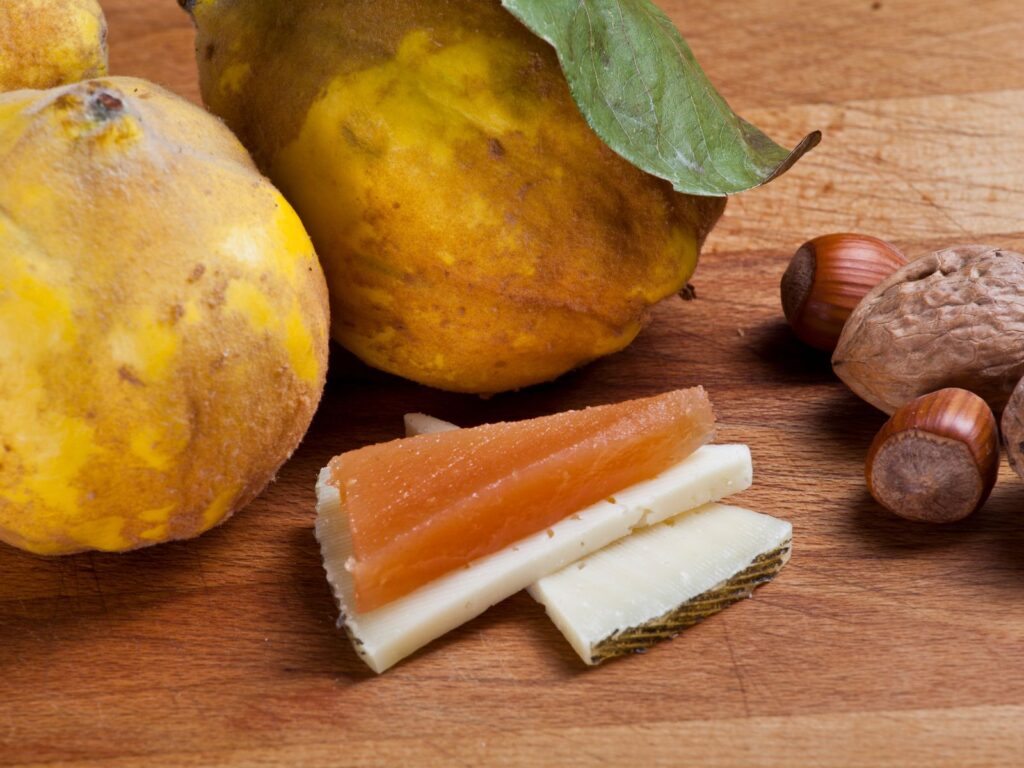
Manchego cheese is a versatile ingredient that can be served in a variety of ways, depending on the age and texture of the cheese. Here are some popular ways to serve and enjoy Manchego cheese:
- Cheese boards: Manchego cheese is a great addition to any cheese board. Pair it with other cheeses, fruits, nuts, and crackers to create a delicious and visually appealing spread. Also, you can serve Manchego cheese with quince paste, which is a sweet jelly made from quince fruit.
- Tapas: In Spain, Manchego cheese is often served as a tapa, which is a small dish of food. Try serving slices of Manchego cheese with cured meats, olives, and other small bites.
- Grilled cheese: Manchego cheese melts well, making it a great choice for a gourmet grilled cheese sandwich. Moreover, you can pair it with some crusty bread, sliced ham, and roasted peppers for a delicious and satisfying meal.
- Salads: Manchego cheese can add flavour and texture to salads. Try adding shaved or crumbled Manchego cheese to a spinach salad with sliced strawberries and a balsamic vinaigrette.
As always, it’s important to let the cheese come to room temperature before eating to bring out its full flavour and aroma. For maximum flavour, pair Manchego cheese with a glass of local red wine, such as Tempranillo or Rioja.
Is Manchego healthy?
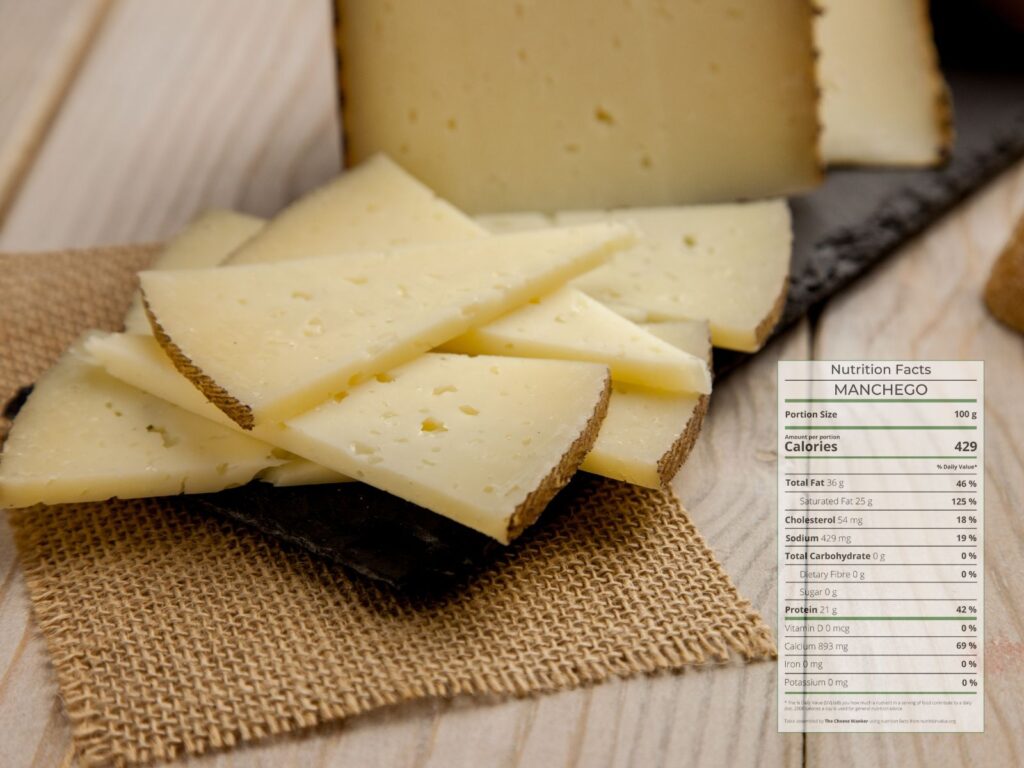
Due to its nutritional composition, Manchego is suitable for lactose intolerance and ketogenic diets. Moreover, most health authorities around the world consider this aged pressed cheese to be safe during pregnancy. You can read more about the official nutrition facts for Manchego by clicking here.
What are three alternatives to Manchego?
If you can’t get your hands on your favourite Manchego or simply want to try something a little bit different, we’ve got three great recommendations for you.
Idiazabal
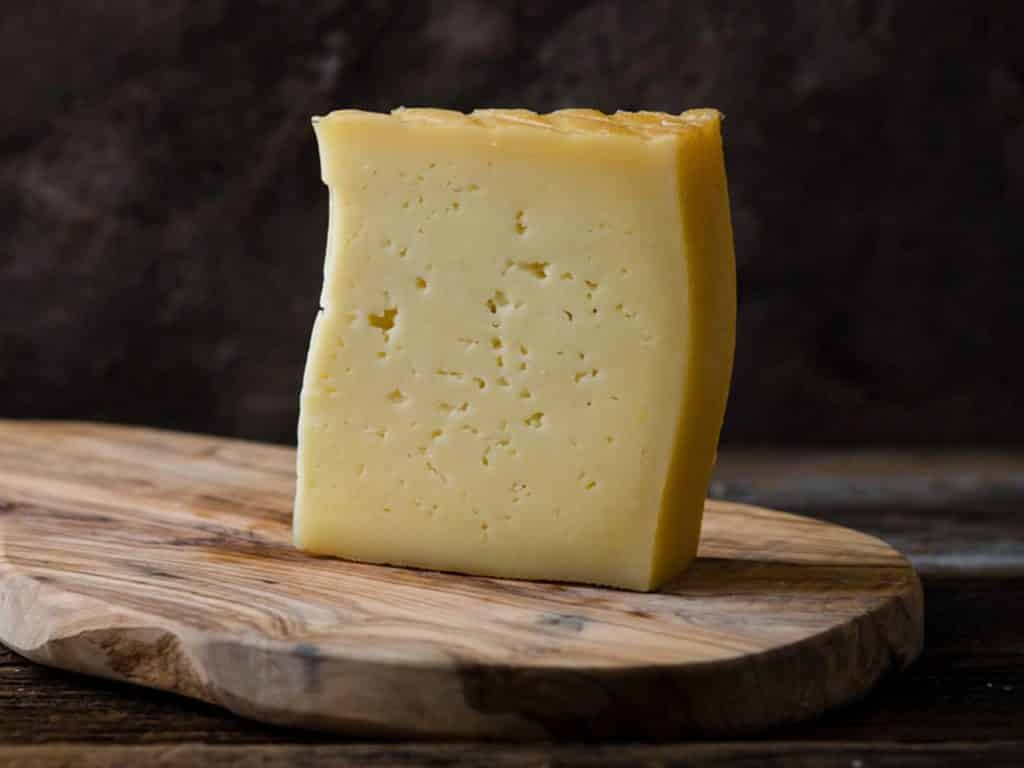
Idiazabal is a traditional, farmhouse, pressed uncooked cheese made from raw milk of Latxa or Carranza sheep in the Basque and Navarre regions of northern Spain. The cheese gets its name from the local village of Idiazabal. In summer, their sheep migrate to higher pastures to graze on new grass.
During those months, the artisanal cheese makers milk the sheep, make the cheese and leave it to mature for a minimum of 2 months.
The cheese has a compact texture, with a few pinprick holes. It is dry, but not too crumbly with a pleasantly oily mouthfeel. The characteristic, smoky flavour is the result of the cheeses having been stored near the fireplaces. There were no chimneys in the simple mountain huts, so the cheeses absorbed the sweet, aromatic smoke. The taste of the cheese is reminiscent of burnt caramel and bacon.
Traditionally, the locals enjoy this historic cheese on toasted bread, over salted crackers or grated in salads. Idiazabal pairs well with a simple red wine like Tempranillo, dry cider, or Saison beer.
Mahón Menorca
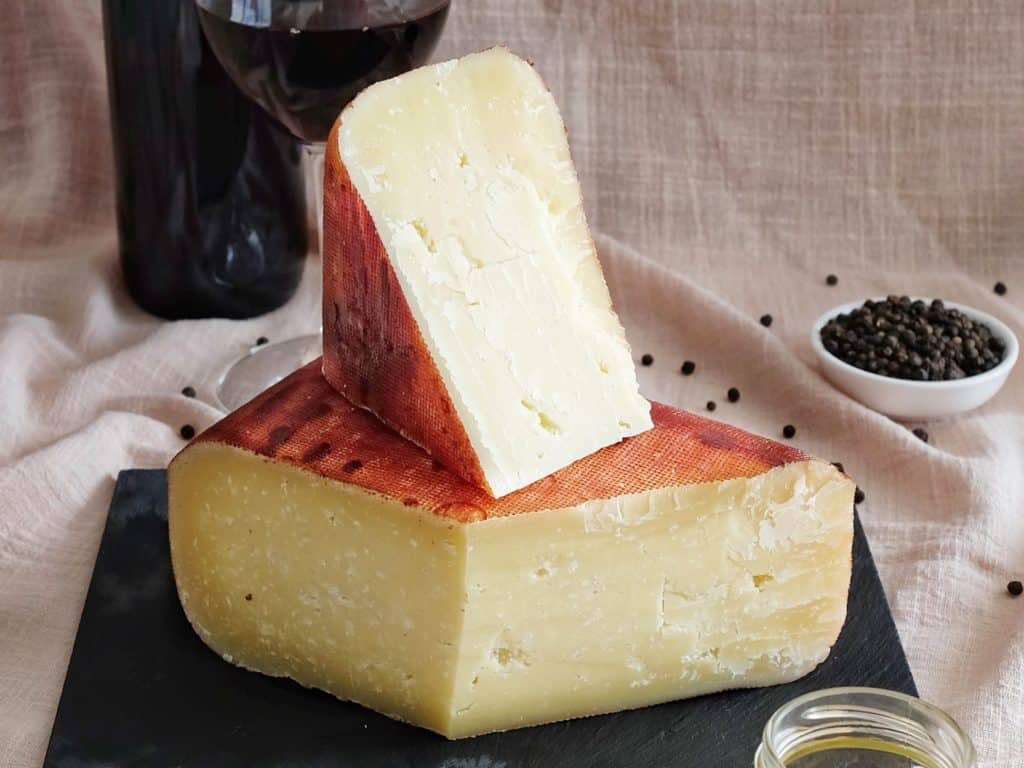
Next, we have Mahón, a pressed uncooked cheese that finds its roots on the island of Menorca. Mahón is released for consumption at various stages of maturation. Local artisans in Menorca make this cheese in square-shaped blocks that they then mature in local cellars.
Mahón is released for consumption at various ages. For your tapas night, you will want a 5 month Mahón Curado. At this age, the paste is darker and becomes crumbly with a spattering of crunchy lactose crystals. Moreover, the cheese’s flavour is incredibly complex with notes of wood, caramel, nuts and spice that mirror the Mediterranean seascape.
Enjoy this hard crumbly cheese the traditional way; thinly sliced with some extra virgin olive oil and cracked pepper. And the perfect beverage pairing for Mahón is a local Tempranillo or Rioja.
Pecorino Romano
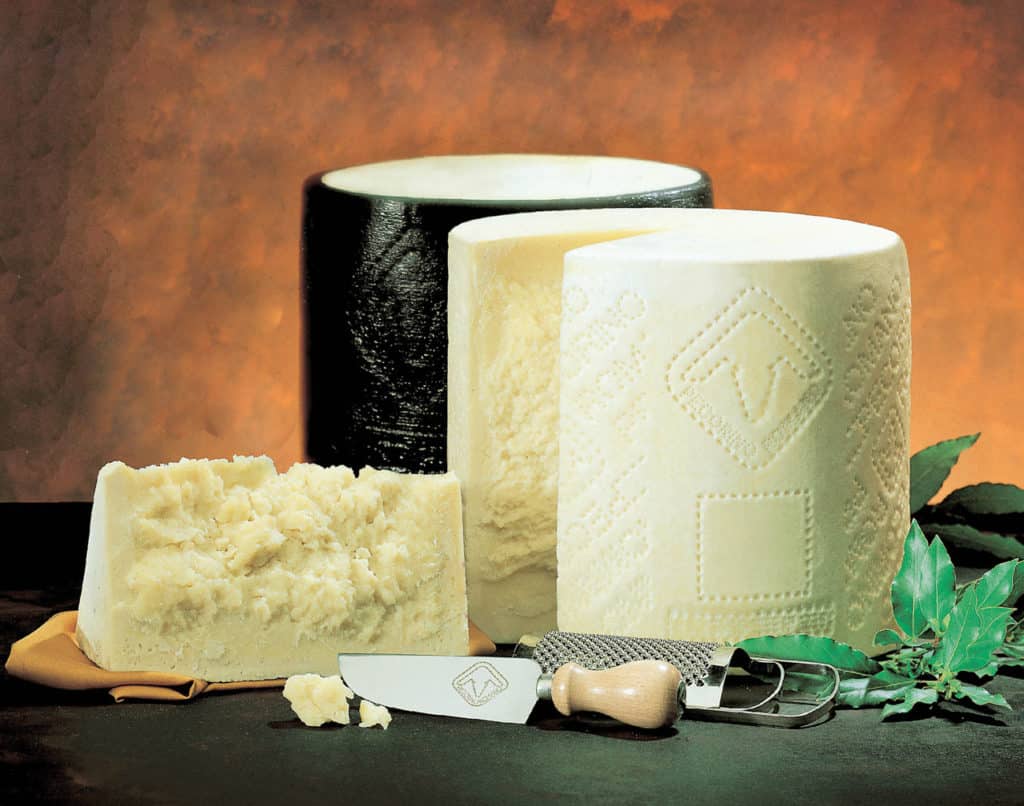
Pecorino Romano is a pressed cooked cheese that originates from the Lazio region of central Italy. Actually, this grana-style cheese is one of Italy’s oldest cheeses with records of its existence dating back to the 2nd century. Indeed, the Roman legions used it as a staple in their diet alongside bread and farro soup.
You will want to choose a mature Pecorino (over 8 months) for the best crumbly texture. Undoubtedly, Pecorino Romano is an excellent table cheese, particularly when combined with fresh vegetables and fruit.
Having said that, Italians also enjoy it grated on classic Italian dishes such as Bucatini all’Amatriciana, Spaghetti Cacio e Pepe and Prosciutto, Truffle & Pecorino Pizza.
Conclusion
In conclusion, Manchego cheese is a traditional Spanish cheese that is loved for its distinctive flavour and texture. It is made from sheep’s milk and is available in a variety of ages and types, from mild to aged and from creamy to crumbly.
It is a popular ingredient in many Spanish dishes and can also be enjoyed on its own.
While it is a nutritious food, it should be consumed in moderation due to its high fat content. Overall, Manchego cheese is a delicious and versatile cheese that has earned a place in the hearts and palates of cheese lovers around the world. What’s your favourite way to enjoy Manchego? Drop us a comment below.
